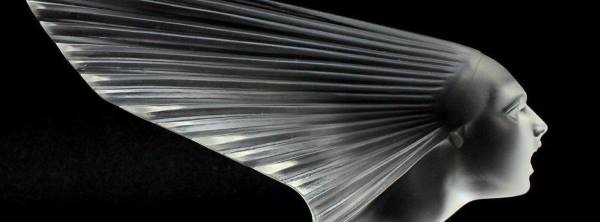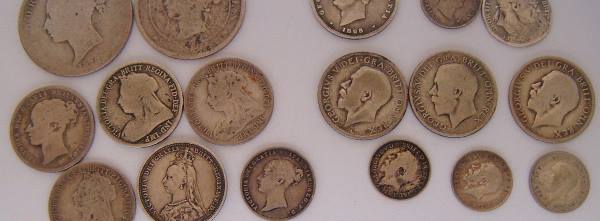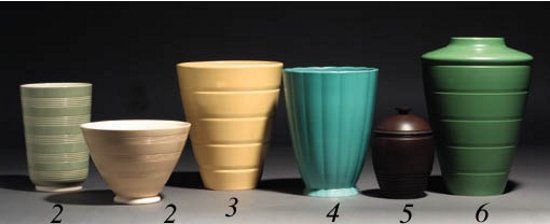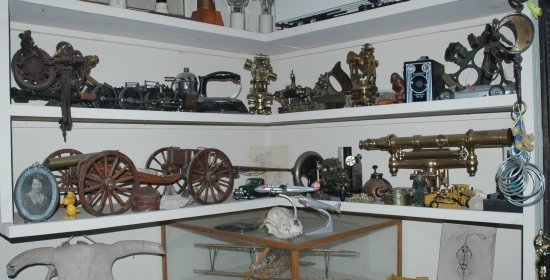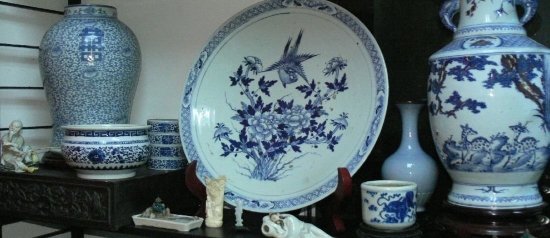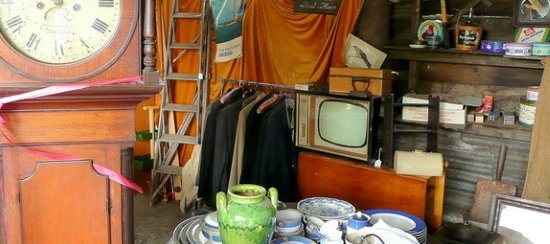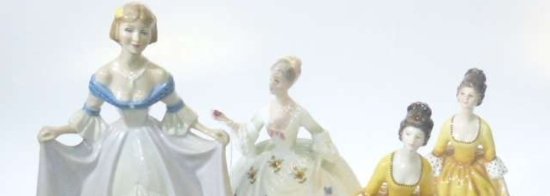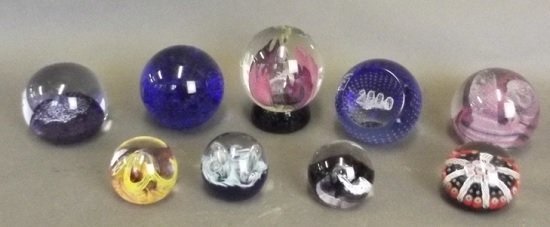The Deco era is remembered today for its styles and forms that were uniquely modern, futuristic, even. It is remembered, as Daniel Gallen in his introduction to the catalogue of Christie’s most recent specialist Deco sale put it, as ‘the decisive turning point in the conflict between the old and the new’. Yet it is important to remember that Deco was not a coherent movement, and its very name was not used until many years later. Today, it seems as if the designer is king, and design has become a part of daily life. If that is indeed the case, then we owe much to those who went before, especially in the Deco era people like the following, without whom design history would have been very different.
Edgar Brandt
Edgar Brandt has been described as first and foremost a craftsman, rather than a designer, not least since so many of his pieces were actually designed by architect Louis Favier. His forté was metalwork, and his skill was readily adapted to the demands of standard lamps, mirrors, light fittings, umbrella stands, console tables and much more. He took welding techniques to new levels and combined iron elements with bronze, copper and other alloys to obtain variations in colour. He chose stylised motifs inspired by nature, including pine cones, roses and eucalyptus as well as animals. One of the most memorable pieces Brandt and Favier produced was a standard lamp in the form of a serpent, circa 1925. Brandt was able to give a sheen to the iron, producing a snakeskin-like effect.
Marcel Breuer
If you believe furniture should be made of mahogany and that tubular steel is only fit for bicycle frames, then Marcel Breuer is not likely to be one of your favourite people. Born in Pecs, Hungary, in 1902, he studied at the new ‘Bauhaus’ of Walter Gropius, a new style of design college in Germany.
Breuer was a keen cyclist and, inspired by the tubular steel frame of his favourite mode of transport, adapted the material to use for furniture. His best known creation is the B32 chair of 1927, a cantilever design which had only two legs at the front, which curved down to form a base, while the back of the chair was held up by the strength of the front legs.
This, and the numerous variants on the tubular steel theme, have been much copied ever since, so it surprises many people to discover that such designs are as old as they are. An original Breuer chair is easily confused, at first glance, with one of the many chairs produced in this style in the 60s and 70s. But, as with antiquarian books, a first edition is everything, and original Breuer furniture can reach four and even five figure sums.
Demetre Chiparus
The early 20th century, must have been an exciting time for lovers of dance. In 1909, Sergei Diaghilev brought his Ballets Russes, to the West, and great names such as Nijinsky and Anna Pavlova appeared for the first time. A young Rumanian sculptor named Demetre Chiparus, who had emigrated to Paris, was sufficiently excited to immortalise dancers in his work. His figures show the influence not only of dancers, but also of exotic cultures. The discovery of Tutankhamen’s tomb in Egypt manifested itself in one of his finest figures, Egyptian Dancer, showing a nubile young woman in an elaborate headdress, with a fringed cloth across her hips. But his output wasn’t all so sensuous he is equally remembered for his charming figures of children.
Clarice Cliff
Clarice Cliff continues to confound her critics or would, except that I suspect they’ve probably given up by now. The story of how she rose from humble origins to become a true doyenne of Deco is well known. But if you think the Cliff phenomenon has left no room for the collector of modest means, think again. Smaller pieces in particular can still be quite affordable and there could still be undiscovered pieces still out there. The market seems more stable than it used to be, so Clarice also looks like a sound long-term investment.
Susie Cooper
Susie Cooper has been overshadowed to some extent by Clarice Cliff, but her designs were as distinctive in their own way as anything produced by Cliff. Her wares have a large following today, and her most popular lines with collectors include tablewares such as Kestrel, Wren and Curlew as well as early abstract pieces with bold, geometric designs.
Georg Jensen
If you like to hear stories of a working class boy made good, then look no further than Georg Jensen, the Dane from humble origins who became an acknowledged master of design. After trying and failing as a sculptor, he found success with silversmithing and although he died in 1935, the firm he founded continues to this day. His strikingly modern designs can still be overlooked at smaller auctions, but he is better known now than just a few years ago. Early Georg Jensen can command big money, but some post-war Georg Jensen can still be acquired for reasonable prices and looks like a good investment.
Betty Joel
That the 20th century saw such advancements in opportunities for women, is reflected in the appearance of female designers in the Deco era, and in this list. Hong Kong-born Betty Joel is one of the best known furniture designers of the era, and began her furniture design career in Portsmouth, having settled in England at the end of the First World War, when she was in her twenties.
Her design career began by accident, when she criticised her husband’s furniture designs and was challenged to do better. She did. Her designs were simple and straightforward; ideal for an age that was characterised by clean lines. While her furniture was never as radical as that produced by some other designers, it has an honesty and integrity that stems from the best of the Arts and Crafts traditions.
Rene Lalique
The name of Rene Lalique is very well known, and you are not likely to find this distinctive jeweller turned glassmaker’s work lying unnoticed in a cardboard box at a fair but if you do, buy it. He is an example of a designer who straddles the Nouveau/Deco period and was a success during both. Car mascots are among those items that are sought after, but do beware fakes of rarer, coloured pieces are known, so it’s best to buy from a reputable dealer.
Ferdinand Preiss
Elegant bronzes epitomise the Deco era for many people, and I have singled out three people working in this field for a special mentions. Having already mentioned Chiparus, the bronze and ivory pieces of German Ferdinand Preiss must also get a look in. Preiss collaborated with Arthur Kassler to form Preiss & Kassler in Berlin in 1906, but the duo were conscripted on the outbreak of war in 1914. After the war, they re-started the firm, expanding their scope of production.
Preiss was a great technician in the art of ivory carving and, like Chiparus, he sometimes turned his hand to depictions of children. His children were often active, playing with hoops, for example. But adults could be equally active, and Preiss was much inspired by sports. The influence of the Olympic games no doubt played its part, but this was an era in which sport and the outdoor life was widely promoted as a route to health and vitality, and the bronzes reflect this.
Jacques Emile Ruhlmannn
The Art Deco movement gets its name from that of a major exhibition of ‘Arts Decoratifs et Industriels Modernes’ held in Paris in 1925. Jacques Emile Ruhlmannn was one of its undoubted stars. His pavilion at the fair was modelled on the residence of a wealthy art collector, and his furniture used the rarest and most exquisite of materials. Some of his furniture was purchased directly by top international museums wise buys, since Ruhlmann’s furniture is often described as the epitome of Deco style.
His great success is all the more remarkable considering his lack of formal training in cabinet making. He drew his designs in ink on a scale of 2/100th, which he than passed on to a draughtsman to enlarge, and finally on to a cabinet maker.
Marius-Ernest Sabino
Marius-Ernest Sabino is often overlooked and is certainly overshadowed by René Lalique. This seems fair enough, since it is generally acknowledged that the lighting, vases and statuary he produced from the early 1920s until 1939, were never of the same standard. Critics point out that his designs were never as imaginative, nor as finely executed as those of Lalique. His inclusion in our list of a dozen Deco designers may seem peculiar, even undeserved, but Sabino’s products are interesting and collectable in their own right and have their own followers. This is especially true of his pieces in deep, opalescent glass. Sabino is also the best known example of several French firms that tried to rival Lalique.
Bruno Zach
Finally, to the third in our trio of artists working in bronze, the Austrian Bruno Zach. Typical figures show athletic, strong, independent women and frequently combine the seductive with the humorous. An example is The High Wind, which shows a girl in high heeled boots and a clinging dress battling against the elements. The handle of her parasol is in the form of a monkey, whose eyes are popping out owing to its proximity to her breasts. Some of Zach’s work is provocative, bordering on the kinky. One of his most famous figures is entitled The Riding Crop, and shows a woman wearing (or almost wearing) her underwear, in a domineering pose and with a riding crop behind her back. And I think I’ll leave you with that image.

